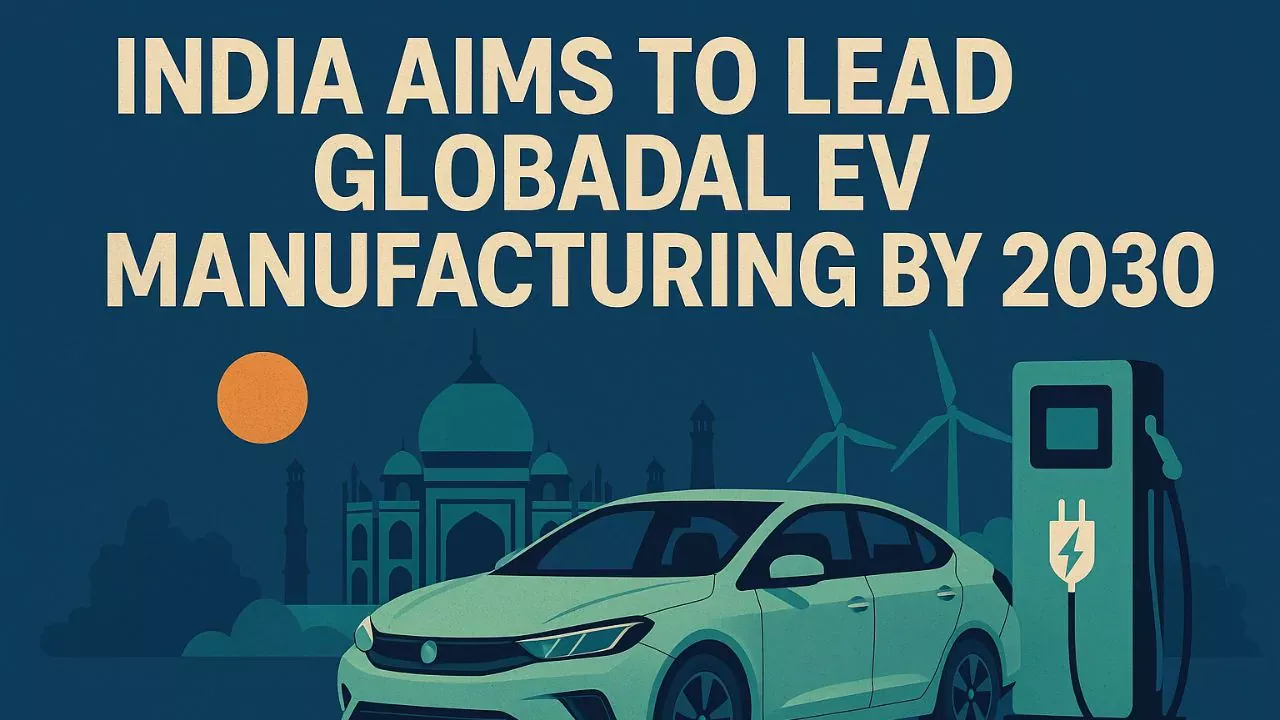New Delhi, April 12, 2025 – Union Minister for Road Transport and Highways, Nitin Gadkari, has reaffirmed India’s ambitious goal to become the world’s largest electric vehicle (EV) manufacturer by 2030, highlighting the nation’s rapid progress in the automotive sector and declining battery costs as key drivers. Speaking at a recent industry event, Gadkari underscored the growth of India’s auto industry, which has surged from a valuation of ₹14 lakh crore in 2014 to ₹22 lakh crore today, positioning the country as the third-largest automobile market globally, behind only the United States and China.
“India is on track to lead the world in electric vehicle manufacturing by 2030,” Gadkari declared, emphasizing the role of alternative fuel vehicles in achieving sustainable mobility. He credited falling lithium-ion battery costs, which have dropped significantly in recent years, for making EVs more affordable and driving demand both domestically and internationally. “When our government came to power in 2014, no one believed in electric vehicles, but today it’s a reality,” he added, noting that innovations in battery technology and policy incentives are fueling the sector’s growth.
The minister highlighted that India’s EV market is projected to reach ₹20 lakh crore by 2030, with annual sales expected to hit 10 million units across two-wheelers, three-wheelers, passenger vehicles, and commercial vehicles. This growth is already evident in the electric two-wheeler segment, which saw 1.15 million units sold in FY25, a 21% increase year-on-year. Companies like Ola Electric, Bajaj Auto, and TVS Motor are leading the charge, with some exporting nearly half their production, signaling India’s rising global competitiveness.
However, Gadkari acknowledged a significant challenge: India’s heavy reliance on imported components, particularly battery cells from China, which account for a substantial portion of EV costs. “While most EV components are made in India, battery cells remain a bottleneck,” he noted, urging the industry to invest in research and development (R&D) to develop indigenous alternatives. He called for breakthroughs in battery technologies, such as sodium-ion or aluminium-ion cells, to reduce dependency on lithium-ion imports and enhance self-reliance under the Atmanirbhar Bharat initiative.
To support this vision, Gadkari outlined government efforts, including the PM eDrive scheme, which offers subsidies for EV adoption, and Production Linked Incentive (PLI) programs to boost local manufacturing. He also mentioned plans for 400 pollution-reduction projects to convert agricultural waste into alternative fuels like bio-CNG, further diversifying India’s energy mix. Infrastructure development, such as dedicated EV charging networks along highways and urban cycle tracks, is also underway to support the EV ecosystem.
Despite the optimism, industry experts caution that challenges like limited charging infrastructure—India has only 25,000 public chargers compared to China’s 900,000—and high upfront costs could hinder progress. Gadkari remains undeterred, emphasizing that increased R&D investment and collaboration between startups, scientists, and automakers will address these hurdles. “It’s time for Indian innovators to find alternatives to everything,” he said, referencing past support for research into non-lithium-ion technologies.
India’s EV ambitions are also shaped by its cautious approach to foreign investments. The recent rejection of a $1 billion proposal from China’s BYD reflects a preference for partnerships with firms like Tesla and Vietnam’s VinFast, aligning with geopolitical and economic priorities. As India pushes to localize production, the focus on R&D and policy support will be critical to achieving Gadkari’s vision of surpassing global giants like China and the US by 2030.
With the auto industry poised for exponential growth, India’s journey to EV leadership is gaining momentum, but overcoming import reliance and scaling infrastructure remain key tests for this electrified future.

